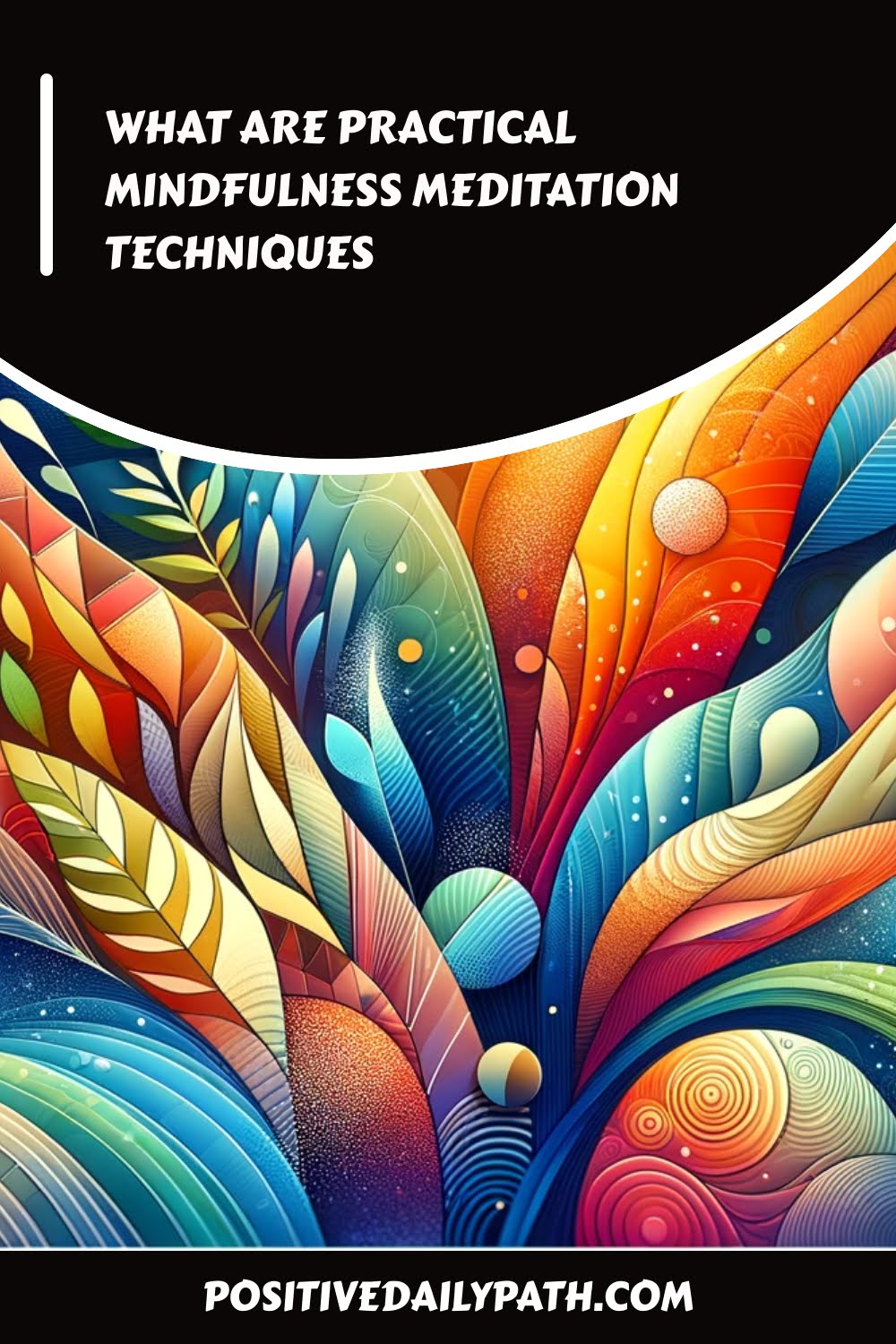Mindfulness meditation, a method rooted in ancient Buddhist practices, presents a powerful tool to enhance mental clarity and emotional balance in our fast-paced world.
Recognizing its transformative potential, this article elucidates the practical techniques of mindfulness meditation. Designed for beginners, it provides easy-to-follow steps, while also addressing common challenges.
By incorporating these techniques into daily life, one can reap significant benefits, including increased focus, reduced stress, and improved overall wellbeing.
Key Takeaways
- Mindfulness meditation is rooted in ancient Buddhist philosophy and involves focusing on the present moment with acceptance and without judgment.
- Regular practice of mindfulness meditation offers physical and psychological benefits, such as improved focus, stress reduction, and enhanced emotional well-being.
- Beginners can start with simple techniques such as different meditation postures and breathing techniques.
- Incorporating mindfulness meditation into daily life involves dedicating fixed times to meditate, creating a tranquil space, and infusing mindfulness into everyday tasks.
Understanding Mindfulness Meditation
The practice of mindfulness meditation is a technique rooted in ancient Buddhist philosophy. It involves focusing one's attention on the present moment with acceptance and without judgment. By understanding its origins, one can comprehend the power of mindful awareness.
This method empowers individuals to control their thoughts, thereby fostering resilience, increasing focus, and facilitating calmness. Embrace this transformative journey to realize your latent potential.
Benefits of Regular Practice
Regular practice of mindfulness meditation offers significant physical and psychological benefits. These benefits range from improved focus and stress reduction to enhanced emotional well-being. Embrace this powerful tool to master your mind, channel your energy, and cultivate resilience.
With continued practice, you'll foster enhanced focus and experience profound stress reduction. This will pave your way to a life of tranquility and control. Harness the power of mindfulness for a formidable, balanced you.
Simple Techniques for Beginners
Initiating your journey into mindfulness meditation, several straightforward techniques can serve as a foundation for beginners, fostering the development of inner tranquility and focus. Understanding meditation postures and breathing basics are core to this practice.
| Technique | Description |
|---|---|
| Posture 1 | Description |
| Posture 2 | Description |
| Breathing 1 | Description |
| Breathing 2 | Description |
| Combination | Description |
Master these techniques and unlock your potential for mental clarity and power.
Incorporating Meditation Into Daily Life
Incorporating mindfulness meditation into your daily routine can significantly enhance mental clarity and foster a sense of peace.
Cultivate power by:
- Meditation scheduling: Dedicate fixed times to meditate daily, ensuring consistency.
- Meditation spaces: Establish a tranquil space for your practice, enhancing focus and serenity.
- Mindfulness integration: Infuse mindfulness into everyday tasks, transforming mundane into meditation.
Conquer your day with tranquility and power.
Overcoming Common Meditation Challenges
The process of embedding mindfulness meditation into your daily life may present a few hurdles; overcoming these common challenges is integral to secure the full benefits of the practice.
Addressing distractions and achieving consistency are key to this end. Embrace distractions as part of the journey, gently refocusing each time. Harness your inner power to maintain a routine, cultivating a resilient and focused mind.
Frequently Asked Questions
What Are Some Examples of Mindfulness Meditation Techniques Used in Various Cultures?”
Mindfulness in Buddhism, like a calm lake reflecting reality, emphasizes observing thoughts without judgment. Taoist Meditation, on the other hand, focuses on harnessing inner energy, empowering individuals to achieve tranquility and mental clarity.
Are There Any Health Risks or Potential Dangers Associated With Mindfulness Meditation?”
While meditation generally promotes wellness, potential side effects include anxiety or depersonalization. Risk management strategies, like guidance from a trained professional, can mitigate these risks, empowering individuals to effectively harness the benefits of mindfulness meditation.
How Does Mindfulness Meditation Affect Our Brain Structure and Functionality?”
Mindfulness meditation significantly influences our brain structure and functionality through neuroplasticity effects. It fosters new neural connections, enhances cognitive abilities, and even impacts our mindfulness genetics, empowering us to better control our thoughts and emotions.
Can Mindfulness Meditation Be Used as a Therapy for Mental Health Disorders?”
Yes, mindfulness meditation can act as a therapeutic tool for mental health disorders. It's often prescribed as ‘meditation prescriptions,' due to its minimal side effects and potential to empower patients through self-awareness and control.
What Is the Role of Mindfulness Meditation in Stress Management and Resilience Building?”
Mindfulness meditation, originating from Buddhist traditions, plays a significant role in managing stress and building resilience. It offers numerous benefits like enhanced focus, emotional balance, and improved psychological well-being, empowering individuals to handle life's challenges better.
Conclusion
In essence, mindfulness meditation, akin to a mental gym, aids in training the mind to focus and redirect thoughts, promoting mental health and well-being.
The regular practice of simple techniques can be seamlessly integrated into daily life, bolstering resilience against common meditation challenges.
By fostering self-awareness, concentration, and emotional regulation, mindfulness meditation equips individuals with the tools to navigate the tumultuous seas of life with greater tranquility and clarity.




